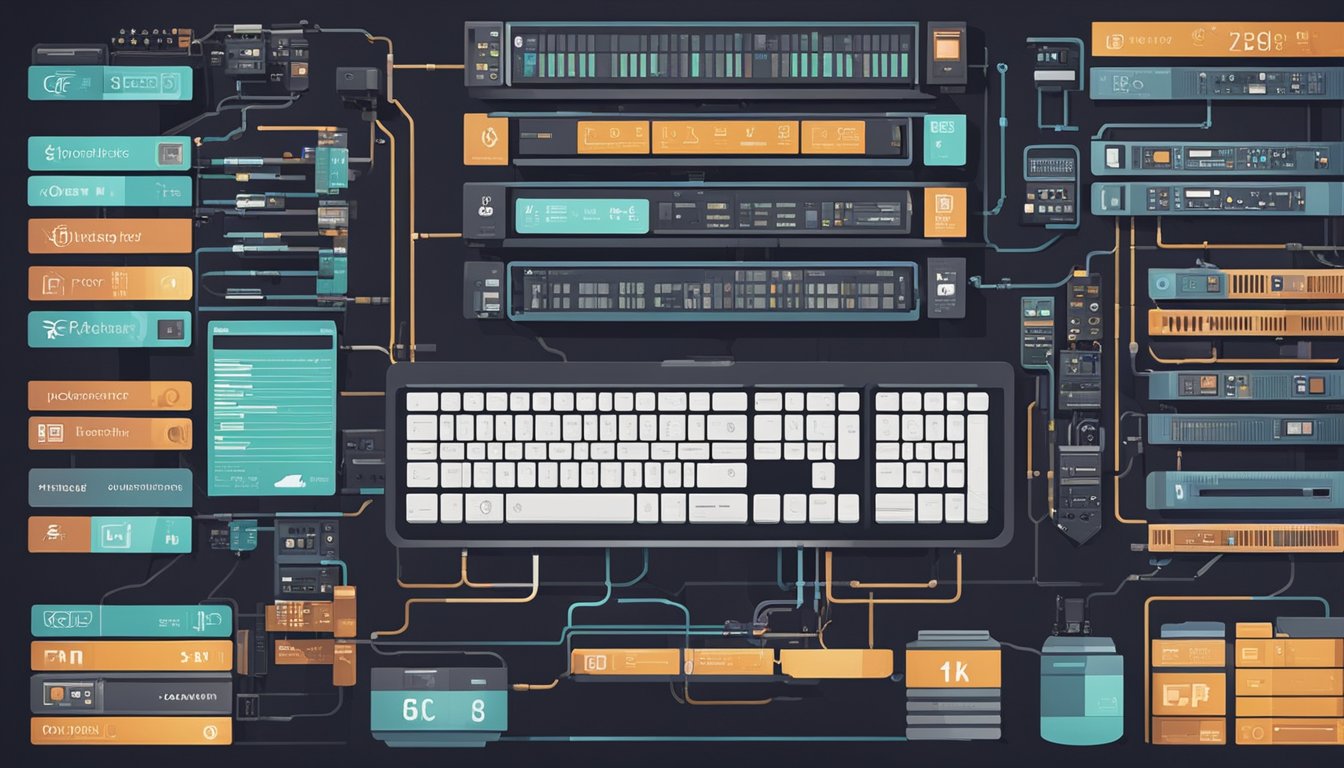What is Tech Stack Understanding the Fundamentals of Technology Stacks
Tech stack is a term that is often used in software development and web development. It refers to the set of technologies, programming languages, frameworks, and tools that are used to build an application or software. A tech stack is essentially the foundation of any application, and it determines the type of applications that can be built, the level of scalability, and the ease of maintenance.

Understanding tech stack components is crucial for developers as it helps them determine the best set of technologies to use for their project. A tech stack is typically divided into two parts: the front-end and the back-end. The front-end is the part of the application that the user interacts with, while the back-end is responsible for handling the logic, data storage, and communication with other systems. Popular front-end technologies include HTML, CSS, and JavaScript, while popular back-end technologies include Node.js, Ruby on Rails, and Django.
Choosing the right tech stack is important as it can have a significant impact on the success of a project. Developers need to consider factors such as the complexity of the project, the scalability requirements, and the availability of skilled developers. In this article, we will explore the different components of a tech stack, popular tech stacks, and how to choose the right tech stack for your project.
Key Takeaways
- A tech stack is the set of technologies, programming languages, frameworks, and tools used to build an application or software.
- Understanding the components of a tech stack is crucial for developers to determine the best set of technologies to use for their project.
- Choosing the right tech stack is important and depends on factors such as project complexity, scalability requirements, and availability of skilled developers.
Understanding Tech Stack Components

A technology stack is a set of tools and technologies used to develop a web app or software product. It is composed of several components that work together to provide a complete solution. In this section, I will discuss the three main components of a tech stack: Frontend Technologies, Backend Technologies, and Databases and Servers.
Frontend Technologies
Frontend technologies are those that are responsible for the user interface and user experience of a web app. They include HTML, CSS, and JavaScript. HTML provides the structure of the web page, while CSS is responsible for the layout and styling. JavaScript is used for interactivity, such as form validation and animations.
Frameworks like AngularJS and Vue make it easier to develop complex user interfaces and manage state. These frameworks are built on top of JavaScript and provide additional functionality and ease of use.
Backend Technologies
Backend technologies are those that are responsible for the server-side of a web app. They include programming languages like Java, Python, PHP, Ruby, and .NET. These languages are used to write the business logic of the web app and interact with the database.
Frameworks like Node.js and Express.js make it easier to develop server-side applications. They provide a runtime environment for JavaScript on the server-side and simplify the development process.
Databases and Servers
Databases and servers are the backbone of a web app. They store and manage the data used by the web app. Databases can be SQL or NoSQL, depending on the requirements of the web app. SQL databases like PostgreSQL and MySQL are used for structured data, while NoSQL databases like MongoDB are used for unstructured data.
Servers like Apache, Nginx, and IIS are used to serve the web app to the user. They handle requests from the client and send responses back. Cloud platforms like AWS and Azure provide scalable solutions for hosting web apps and managing databases.
In conclusion, understanding the components of a tech stack is essential for web development. Choosing the right components can greatly affect the scalability and performance of a web app. By using the right combination of frontend technologies, backend technologies, and databases and servers, developers can create robust and scalable web apps that provide a great user experience.
Popular Tech Stacks

As mentioned earlier, a tech stack is a combination of tools and technologies used to build an application or software. There are several popular tech stacks in use today, and we will discuss some of them below.
MEAN Stack
The MEAN stack is a popular tech stack used to build dynamic web applications. It stands for MongoDB, Express, Angular, and Node.js. MongoDB is a NoSQL database that stores data in a JSON-like format. Express is a web application framework used to build web applications in Node.js. Angular is a front-end framework used to build dynamic and responsive web applications. Node.js is a server-side JavaScript runtime environment used to execute JavaScript code on the server-side.
LAMP Stack
The LAMP stack is another popular tech stack used to build web applications. It stands for Linux, Apache, MySQL, and PHP. Linux is an open-source operating system used as the server operating system. Apache is a web server software used to serve web pages. MySQL is a relational database management system used to store and manage data. PHP is a server-side scripting language used to build web applications.
MERN Stack
The MERN stack is similar to the MEAN stack, but it uses React instead of Angular. It stands for MongoDB, Express, React, and Node.js. React is a popular front-end library used to build user interfaces. It is known for its simplicity, performance, and flexibility.
In summary, there are several popular tech stacks used in software development, including the MEAN, LAMP, and MERN stacks. Each stack has its strengths and weaknesses, and choosing the right stack depends on several factors, including the project requirements, the development team's skills, and the budget.
Choosing the Right Tech Stack

When it comes to choosing the right tech stack, there are several factors to consider. As a developer, I have found that the following three sub-sections can help guide the decision-making process: Project Requirements, Cost and Scalability, and Developer Expertise.
Project Requirements
The first step in choosing a tech stack is to understand the project requirements. This includes identifying the target audience, the type of software or mobile app being developed, and the infrastructure needed to support it. For example, if the project requires a mobile app, the tech stack should be optimized for mobile devices. This might include using libraries like React Native or Flutter.
Cost and Scalability
Cost and scalability are also important factors to consider when choosing a tech stack. It's important to choose a technology stack that is both cost-effective and scalable. This means considering the cost of components like databases, servers, and front-end libraries. Additionally, the tech stack should be scalable to accommodate growth and changes in the future. For example, using a framework like Spring or Ruby on Rails can help ensure scalability.
Developer Expertise
Finally, it's important to consider the expertise of the development team. Choosing a tech stack that the team is familiar with can help speed up development time and reduce errors. Additionally, it's important to consider the availability of developers with expertise in the chosen tech stack. For example, if the project requires a front-end framework, choosing a popular option like Vue can ensure that there are plenty of developers available.
In conclusion, choosing the right tech stack requires careful consideration of project requirements, cost and scalability, and developer expertise. By taking these factors into account, developers can choose a technology stack that is optimized for their needs and can help ensure the success of their project.
Frequently Asked Questions

What are the benefits of running regular tech stack audits?
Running regular tech stack audits helps to ensure that the technology stack being used is up-to-date and optimized for performance. It can also help to identify any security vulnerabilities or compatibility issues that may arise as new technologies are developed.
What is the meaning of tech stack?
A tech stack is the combination of programming languages, frameworks, libraries, and other tools that are used to build a software application or website. It is important to choose the right tech stack for a project, as this can significantly impact the performance, scalability, and maintainability of the application.
What is an example of a tech stack?
One example of a tech stack is the MERN stack, which is a popular JavaScript-based tech stack used for web development. It includes MongoDB, Express, React, and Node, and is designed to make the development process smoother and more efficient.
Is Python a part of any popular tech stacks?
Yes, Python is a popular programming language that is used in many tech stacks. For example, the Django web framework, which is built using Python, is a popular choice for building web applications.
How can I identify my current tech stack?
To identify your current tech stack, you can review the codebase and documentation for your application or website. You can also use tools such as BuiltWith or Wappalyzer to analyze the technologies being used.
What are some popular tech stacks used by companies?
Some popular tech stacks used by companies include the MEAN stack (MongoDB, Express, Angular, and Node), the LAMP stack (Linux, Apache, MySQL, and PHP), and the .NET stack (Microsoft .NET Framework). The choice of tech stack will depend on the specific needs of the project and the expertise of the development team.

We are committed to delivering a new level of automation that will help organizations save time, money, and staffing resources.
 WRITE FOR US!
WRITE FOR US!
